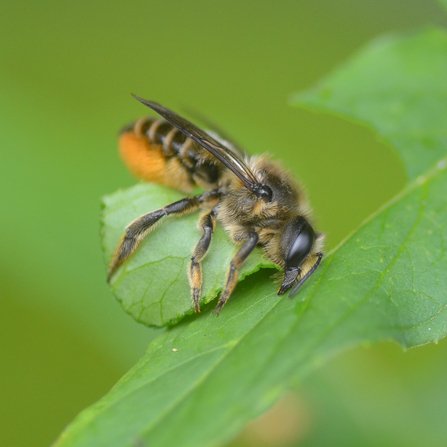
Patchwork leafcutter bee © Ryan Clark

Patchwork leafcutter bee © Ryan Clark
Female leafcutter bees have a flair for interior design and know it’s best to give each of their offspring their own room.
As their name suggests, these solitary bees are known for their ability to cut out pieces of leaves. The females use these materials to make their nests in plant stems, dead wood, cliffs or old walls. They chew these leaves into a pulp, mix with salvia, and use to create walls to separate compartments within the nest. In each compartment, the female lays one egg and packs full of pollen and nectar ready for when the egg hatches the following winter.
Look out for distinctive semi-circular holes in leaves in your garden. If you're lucky, you may spot a female whizzing by with her precious leafy load between April and August!
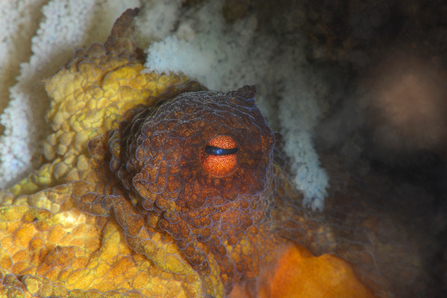
Common octopus guarding eggs © osman/AdobeStock
Common octopus give their life to reproduce and protect their young until the very end.
Octopus are semelparous, meaning they only reproduce once and then die. Female octopuses can lay up to 400,000 eggs in one clutch. Once she has produced her eggs she stops eating, wasting away until she eventually dies. She stays with the eggs for the rest of her life, protecting them from predators and flushing water over them to keep them oxygenated.
You can find Common octopuses around our coastline – look out for them on your next dive!
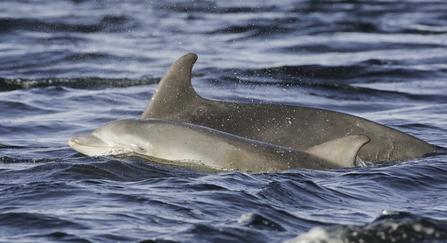
Bottlenose dolphin mother and calf breaking surface © John MacPherson/2020VISION
Bottlenose dolphins have strong mother-infant bonds. They have one calf at a time, and spend 3 to 6 years raising them with their pod.
Dolphin mothers are devoted from the second their calves are born and will help bring them to the surface for their first breath. They usually swim side by side in the pod, with the calf often riding their mothers’ pressure wave to save energy. Like other mammals, dolphins produce milk for their young and calves will suckle for up to 3 years. Interestingly, studies have shown that mothers communicate with their infants in a higher pitch. This has been likened to the way humans use baby talk to speak to young children.
Cardigan Bay has a semi-resident population of bottlenoses and is an important breeding area for the species. Newquay, home to our Cardigan Bay Marine Wildlife Centre, is a great place to visit if you want to see spot these amazing marine mammals!
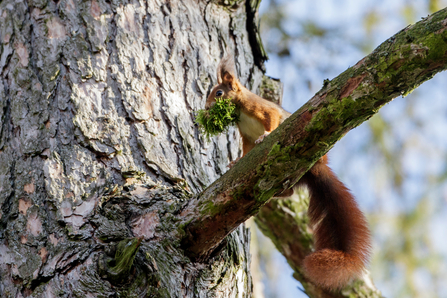
Red squirrel © Rolf Müller/AdobeStock
These single-moms raise a family of kits all by themselves!
Female Red squirrels make a cosy drey lined mosses, leaves and grasses for their young to grow up in. Their kits are born blind and hairless so are fully dependent on mum for the first few weeks of their life. They will spend the first 7 weeks in the safety of the drey while she goes and forages. If she feels threatened she will move them one by one to another drey. At about 7 weeks, the kits venture outside the comfort of their drey guided by their mum. By 10 weeks they are fully weaned and independent from their mother.
There are just three population of Red squirrels in Wales, including a population in mid-Wales we are working to protect. Find out more about our Mid-Wales Red Squirrel Project.
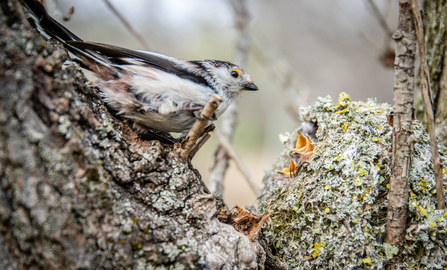
Long-tailed tit feeding chicks in the nest © firesalamander/AdobeStock
These pretty, pink birds are parenting pros, working in pairs to raise their chicks!
Long-tailed tits have a cooperative breeding strategy which means both parents work together and get support from other birds in their flock. They build a domed nest out of moss in a bush or the fork of a tree, and camouflages it with cobwebs and lichen. It's lined with as many as 1,500 feathers to make it soft for the eight to twelve eggs she lays. Their nests are designed to expand as their brood gets bigger.
Look out for this lovely bird in woodlands, gardens and parks! Find your nearest woodland here.